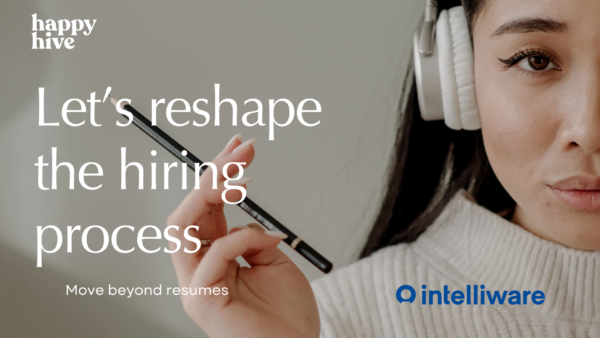AI agents can move work forward, but without guardrails they also move risk. Leaders feel the speed, then feel the compliance questions that follow. Teams want autonomy for agents, yet must keep a clean audit story. The winners balance both with structure that scales.
Regulators are not asking for magic, they are asking for proof. Boards are asking for clarity on what agents can do, cannot do, and how that is enforced. Operations teams are asking for stable processes that fit their tools and talent. Everyone is asking for the same thing in the end, which is predictable outcomes with traceable controls.
“AI agents can move work forward, but without guardrails they also move risk.”
What Regulated Enterprises Need From Agentic AI Governance Today
Regulated teams need clear authority boundaries for each agent so work gets done without policy sprawl. That means scope, permitted tools, data access, and escalation rules that match real jobs. Teams also need consistent evidence of compliance that auditors can read without a translator. The result is a system that makes risk visible while keeping productivity high.
Agent behaviour must stay explainable for business and compliance audiences. That requires simple logs, human-readable rationales, and reproducible runs when issues appear. You also need a way to pause, correct, or retire agents without service disruption. Agentic AI governance turns these expectations into daily practice.

Agentic AI Features And Governance That Regulated Teams Can Trust
Product leaders want features that protect the business without slowing delivery. Risk leaders want governance that holds up under review without blocking change. Engineers want patterns they can implement across stacks and teams. All three groups align when agentic AI features and governance are designed as one system.
Role-Based Access And Least Privilege
Agents should have the same discipline you give to humans who touch sensitive systems. Each agent gets a role, a set of permissions, and a time-bound purpose. Tasks that need extra rights should trigger human approval before execution. Logging must show who granted access, for what reason, and for how long.
Least privilege also applies to data. Context windows should only include the minimum required fields, with redaction for secrets and personal data. Tool connectors should enforce scopes so an agent cannot wander into unrelated systems. When the task ends, the temporary grants should close on their own.
Policy-Aware Task Planning And Orchestration
Agents plan tasks and call tools, which makes policy awareness essential. The plan should check rules before actions, not after. For sensitive steps, the plan should request approval or switch to a safer method. If the policy engine returns a denial, the agent should offer an alternative that still meets the outcome.
Orchestration must keep a firm record of what was planned, what ran, and what changed. Each subtask should carry a policy tag that explains why it was allowed. When policies update, the orchestrator should refresh plans and flag tasks that no longer comply. This keeps work moving while keeping policy in front.
Data Minimisation And Confidentiality Controls
Data controls should start at the prompt layer and continue through storage. Templates should exclude fields that are not required and mask identifiers where possible. Retrieval flows should respect row-level and column-level rules so agents see only what they need. Outputs that include sensitive data should be reviewed or filtered before delivery.
Encryption, tokenisation, and access logs complete the picture. Teams should track who viewed what, when, and through which agent. Secrets should live in a vault, never in prompts or code. Retention settings must match policy so temporary data does not linger.
Traceability And Evidence Capture
Every agent step should create an event with time, actor, tool, input type, and result. These events form a ledger that audit and security teams can read. Summaries are helpful, yet raw events are what prove control. The system should let reviewers replay a task and see the same result.
Evidence should be tamper-evident and exportable to enterprise stores. Teams benefit from a standard schema so events from different agents look the same. Human approvals, exceptions, and overrides must be captured with reason codes. This is how explainability turns into assurance.
Safe Tools, Guardrails, And Fallbacks
Tool access defines the blast radius of an agent. Start with a whitelist of approved tools and deny everything else. Add validators for inputs and outputs so unsafe actions are caught before execution. If a check fails, the agent should degrade gracefully or hand it off to a person.
Fallbacks reduce incident risk and improve trust. You can switch to a lower-risk path, request more context, or escalate to a queue. Clear messages help users understand what happened and what changed. Reliability grows when failure is designed as part of the system.
Project teams get better outcomes when these features ship with governance from day one. Policy lives close to code, and code ships with policy baked in. Stakeholders see progress with fewer surprises, because controls are visible and consistent. That is how agentic AI features and governance earn trust.

Common Agentic AI Governance Challenges And How To Resolve Them
Risk leaders see the same patterns across programmes, and they are solvable with structure. Clarity on ownership, control points, and evidence goes a long way. Teams benefit when they treat agents like colleagues with permissions, not like scripts with unlimited reach. Language that is simple and specific helps everyone make the right call.
- Ambiguous ownership of agents and outcomes. Resolve with a RACI that ties each agent to a named business owner, a risk partner, and an engineering steward.
- Shadow agents and unmanaged tool access. Resolve with a central registry, approvals for tool scopes, and automated discovery that flags unknown runtimes.
- Data leakage through oversized context windows. Resolve with field-level controls, redaction at prompt build time, and standard templates that exclude non-required data.
- Unreviewed model or prompt changes. Resolve with release gates, change tickets, and a rollback plan so teams can restore a known good state.
- Weak evaluation and no baseline. Resolve with task-level metrics, scenario sets, and scorecards that compare against human performance and policy thresholds.
- No incident path when agents misbehave. Resolve with stop controls, containment playbooks, and retrospective reviews that update policy and tests.
Teams that work through these issues reduce noise and raise confidence. The business sees faster approvals because the hard parts are already sorted. Audit reviews become simpler because evidence is structured and easy to read. Progress speeds up because risk and delivery pull in the same direction.
Operating Model For The Governance Of Agentic AI At Scale
The governance of agentic AI needs a model that sets direction and keeps work moving. Teams want fewer meetings and more clear rules. Good models create rhythm, standard roles, and simple artefacts that survive turnover. Everyone knows who decides, who builds, and who signs off.
Clear Roles, RACI, And Decision Rights
A reliable operating model starts with named roles and crisp decision rights. Business owners define outcomes and acceptable risk. Risk partners define policies and test for adherence. Engineering stewards design controls and implement them across code and infrastructure.
RACI makes handoffs clean. When a change touches a policy, the approval path is known before work starts. When an incident occurs, ownership is obvious and response times improve. Confidence grows when people know what they own and what they can approve of.
Policy Library And Control Mapping
Policies should live in one library that business and engineers can read. Each policy links to controls, tests, and evidence types. This turns abstract rules into concrete checks that can be automated. Teams then build once and reuse across agents.
Mappings prevent drift. When a policy changes, the linked controls and tests update in the backlog. Release notes explain the change so auditors see continuity. A shared library keeps language consistent and cuts cycle time.
Change Management And Release Gates
Agents change often, so releases need safe gates. Plans should include prompts, tools, data scopes, and evaluation results. Risk sign-off should scale with impact, not with volume. Low-risk tweaks move quickly while sensitive changes get deeper review.
“A strong operating model aligns people, policy, and code.”
Gates work best when automated. A pipeline can block on missing tests, incomplete evidence, or expired approvals. Rollbacks should be repeatable so teams can recover from bad releases. Clear criteria make change faster and safer.
Incident Management And Learning Loops
Agents will make mistakes, which is why incidents should be expected and rehearsed. A stop control lets teams pause the agent without killing service lines. A containment path limits scope and preserves evidence for review. Users deserve plain updates and a simple way to report problems.
Learning loops close the gap. Post-incident reviews add tests, update policies, and adjust scopes. Metrics track time to detect and time to recover. The model improves because learning is systematic, not ad hoc.
A strong operating model aligns people, policy, and code. Work speeds up because approvals are predictable and right-sized. Confidence rises because evidence is ready before anyone asks. Scale follows when the cadence is steady and the rules are clear.
Technical Guardrails And Audit Trails For Accountable Agentic Behaviour
Engineering teams need controls that are simple to adopt and hard to bypass. Risk teams need records that hold up to scrutiny and can be queried. Service owners need performance that does not buckle under normal load. Good guardrails deliver all three without friction.
- Tool whitelisting with scopes. Allow only approved tools and methods, define scopes per agent, and block unknown calls.
- Prompt and output validators. Enforce input formats, check outputs against rules, and mask or drop unsafe content.
- Rate limits and spend controls. Cap tokens, set per-agent budgets, and alert on spikes that suggest abuse or loops.
- Execution sandboxes. Run code in isolated runners, limit network egress, and restrict file system access.
- Deterministic checkers. Use rules or lightweight models to verify steps before they hit systems of record.
- Immutable, signed logs. Write every event to an append-only store with signatures that prove integrity.
- Evidence retention and access controls. Store traces with clear retention windows and fine-grained read rights.
Solid guardrails prevent small issues from becoming large incidents. Strong audit trails make reviews faster and fairer. Engineers keep moving because controls are reusable components, not bespoke gates. Everyone wins when accountability is built into the path of execution.
Human Oversight Patterns That Keep Agents Aligned With Policy
People remain the safety net that catches edge cases and shifts in context. A common pattern uses thresholds that decide when to ask for approval, when to escalate, and when to stop. Reviewers see the plan, the policy tags, and the evidence so choices are sound. The goal is not to micromanage agents, but to put humans where judgement matters most.
Rotating reviewers reduce bias and spread knowledge. Exception queues collect tricky tasks so experts can teach the system through structured feedback. Periodic calibration sessions align risk tolerance across teams and keep rules consistent. Clear guidance helps reviewers decide fast without guesswork.

Measurement And Assurance To Prove Control And Model Performance
What you measure is what improves, and agents are no exception. Leaders need a view that blends quality, safety, and cost. Teams need task-level metrics that reflect how work actually gets done. Auditors need assurance that controls do what they claim.
- Control efficacy. Track how often controls trigger, how often they block, and how often they miss.
- Task quality. Measure success rate, corrections per task, and user satisfaction for each agent capability.
- Safety outcomes. Count policy violations, near misses, and false positives to balance safety and speed.
- Operational health. Watch latency, queue depth, and time to recover after failures or stops.
- Financial efficiency. Report spend per task, cost per successful outcome, and waste from retries.
- Independent assurance. Schedule periodic reviews that sample evidence, replay traces, and confirm control operation.
A shared scorecard keeps teams honest and focused. Trends point to where to invest and where to cut scope. Leaders gain a single story that ties risk and value. Progress becomes visible and defensible.
Implementation Roadmap For Agentic AI Governance Across Your Enterprise
An effective roadmap balances urgent value with long-term structure. You can show quick wins while building foundations that last. Each phase should leave behind assets, not just presentations. Momentum grows when teams see proof in days and weeks.
Assess Current State And Priorities
Start with a fast inventory of agents, data sources, tools, and owners. Map policies to real tasks and find the biggest gaps. Identify high-value, low-risk use cases that will benefit from clear controls. Write the first slice of your control library and event schema.
Close with funding, staffing, and a quarter-level plan. Name the owners and define the review cadence. Pick one business unit to serve as the early adopter. Set expectations for evidence and success metrics from day one.
Stand Up A Pilot With Guardrails
Choose a contained process with measurable outcomes and motivated sponsors. Build prompts with data minimisation, set tool scopes, and wire validators. Configure logging and a simple dashboard so stakeholders can see progress. Draft incident and rollback steps before the first run.
Invite audit and security early so they shape the controls. Run tabletop tests for approvals and stops. Use a small scenario set to establish a baseline and a target. Share results with clarity and avoid hype.
Build The Control Plane And Tooling
Turn pilot learnings into reusable components. Package policy checks, validators, logging, and approval flows as services. Standardise schemas so events look the same across agents and stacks. Add admin controls for roles, scopes, and releases.
Integrate with enterprise systems for identity, secrets, and storage. Provide templates that make the right patterns the easy choice. Document how to register an agent and how to request scopes. Support teams with a ticket path and clear service levels.
Scale, Train, And Institutionalise
Roll out to more teams with a standard onboarding kit. Expand the control library and keep the mappings current. Train reviewers, owners, and engineers on roles and tools. Hold monthly reviews that highlight metrics, incidents, and improvements.
Make improvements part of the cadence, not side work. Reward teams that ship value with clean evidence. Keep the registry current so leaders see the full picture. The system becomes the normal way to ship agentic work.
A roadmap that focuses on assets and cadence builds trust. Each step reduces risk and increases reliability. Stakeholders see proof, not promises. Scale follows because the method is simple to teach and repeat.

Procurement And Vendor Criteria For Safe Agentic AI Adoption
Good partners make governance easier, not harder. Contracts should reflect how agents work, not only how models work. Security and privacy commitments must match your policy library. Admin controls should be strong enough to support audits.
- Security posture. Confirm identity integration, secret handling, and isolation across tenants and projects.
- Data controls. Require clear data flow diagrams, retention settings, and support for redaction and filtering.
- Policy and admin features. Look for role-based controls, tool scopes, approval flows, and change logs.
- Logging and export. Demand structured events, signed records, and easy export to your data stores.
- Evaluation support. Expect built-in scenario runners, scorecards, and hooks for custom tests.
- Service clarity. Ask for documented support paths, uptime commitments, and pricing that maps to usage.
Procurement that tests these points avoids regrets later. Vendors who support your governance needs reduce total cost and review time. Engineers move faster because controls fit their pipeline. Risk partners get better sleep because evidence is always ready.
Guardrails First, Then Scale
In Electric Mindset – Season 1, Episode 5: ServiceNow: Now What?, Nick Dyment and Duke Osei underline the blog’s thesis: agents create speed, but only governance creates safety. They frame ServiceNow as the “control tower” that registers every agent, attaches policies, and logs inputs/decisions/outputs—so boards get clarity on scope and permissions, risk gets immutable evidence, and ops gets stop/rollback without drama.
The episode maps cleanly to the piece’s core features: role-based access and least privilege, policy-aware planning, data minimisation, and tamper-evident audit trails. When agents drift, incidents flow into change/incident management you already run—policy lives next to code instead of as a slide deck.
Finally, their forward look at multi-agent orchestration matches the roadmap here: a registry, shared schemas, approval gates, and human-in-the-loop thresholds. The result is what both the podcast and this article argue for—predictable outcomes with traceable controls, so you can scale agentic AI without scaling risk.
Common Questions About Agentic AI Governance
Teams often ask similar questions as they shift from prototypes to production. Clear answers help projects move faster and reduce rework. The aim is to set shared expectations that align business value and risk control. These prompts are written to be copy-ready for search and internal knowledge bases.
What Is The Practical Difference Between An Agent And A Chatbot In Enterprise Use?
A chatbot responds to messages in a single turn or short exchange, while an agent plans steps, calls tools, and finishes tasks. Agents carry authority, use credentials, and can change systems, which raises risk. This is why agents need scopes, approvals, and logs that chatbots usually do not require. Treat an agent like a colleague with permissions, not like a page of code.
How Do You Scope An Agent’s Authority Without Blocking Value?
Start from the outcome and list the minimal tools and data needed to reach it. Convert that into role scopes, time limits, and approval thresholds for sensitive steps. Separate read access from write access so risk stays contained. Review scopes on a schedule and after incidents so authority stays current.
How Do You Keep Context Windows Safe When Connecting To Internal Data?
Use retrieval that filters at the source with row and column rules. Redact secrets and personal data before prompts are built, not after outputs appear. Keep a record of what fields were used and why so reviews are simple. Rotate keys and restrict data stores that agents can reach.
What Is A Sensible Starting Point For Evaluations?
Pick one task, one scenario set, and a small scorecard that includes quality, safety, and cost. Compare agent performance to a human baseline, then set thresholds that reflect the task’s risk. Run the same set after each change so you spot drift early. Add more scenarios as adoption grows, not all at once.
How Should We Staff A Cross Functional Governance Board For Agents?
Include a business owner, an engineering lead, a risk partner, and a service owner from operations. Give the group clear decision rights on scopes, releases, and incidents. Meet on a set cadence with a standard packet that includes metrics and open risks. Keep membership stable enough to build memory and speed.
Clear answers shorten approval cycles and improve design quality. People know what to build and what to check. Reviewers know what good looks like and what to question. Progress accelerates because the hard choices are already made.

How Electric Mind Helps You Govern Agentic AI At Scale
Electric Mind works with CIOs, CTOs, and business leaders to turn governance goals into engineered systems. We design control planes that your teams can operate, with role-based scopes, policy checks, and clean audit trails. Our approach keeps risk, engineering, and operations at the same table so choices stay grounded in outcomes. Clients get reusable components, not one-off fixes, and a cadence that sticks.
Delivery is hands-on and measured in shipped controls, trained teams, and better metrics. We modernise what needs to change and integrate with what needs to stay, so day-to-day work continues while governance improves. We co-drive pilots, set up scorecards, and leave behind documentation that auditors can understand. Trust grows because the method is open, the evidence is solid, and the results show up in your operations.
.png)






